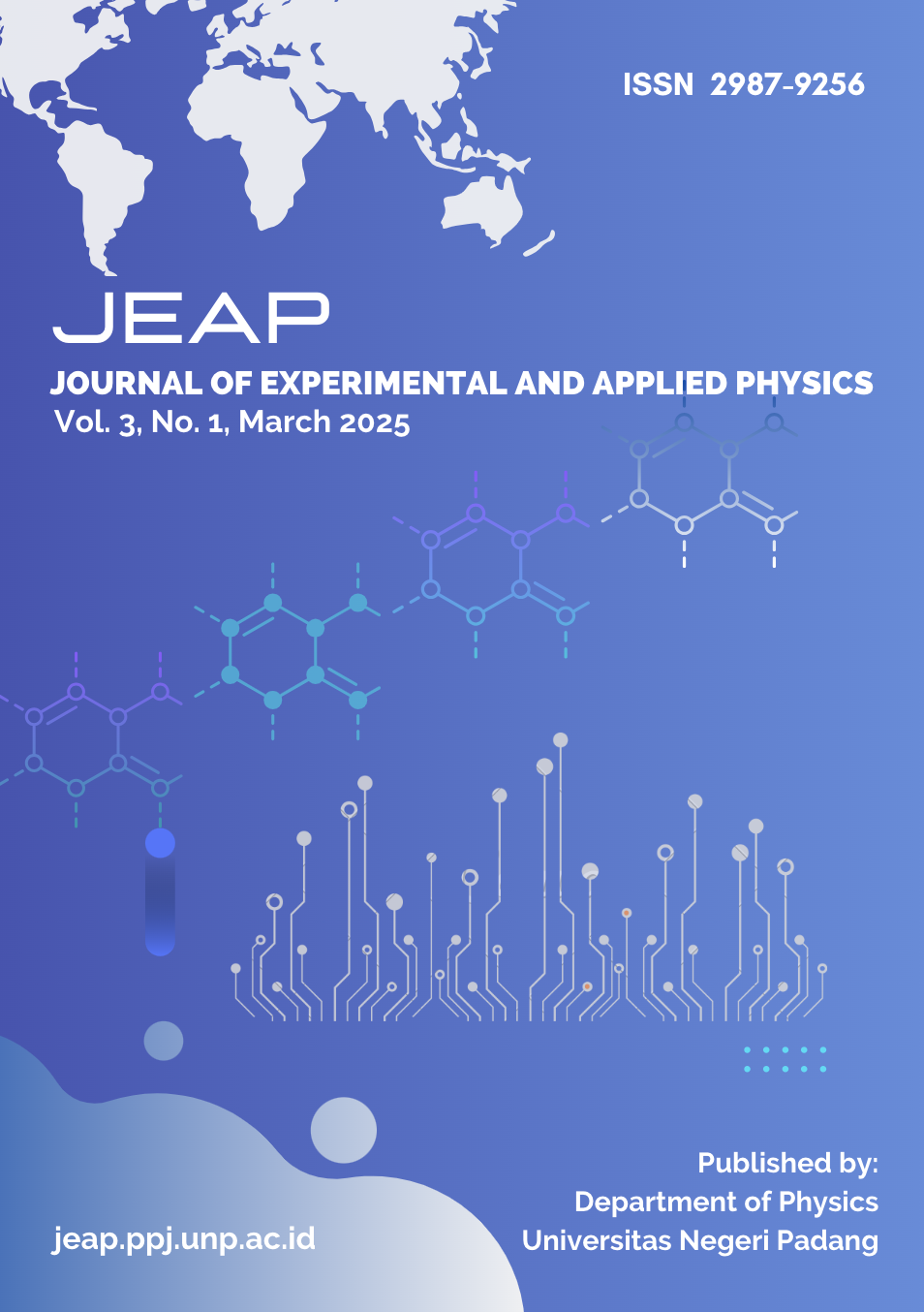Solar Tracker Arduino
DOI:
https://doi.org/10.24036/jeap.v3i1.97Keywords:
Solar tracker, LDR sensor, Intensity, Voltage, Lux meterAbstract
Abstract: Electrical power is essential to human life, but dependence on non-renewable fossil fuels is driving the need for alternative energy development such as solar power. Conventional systems without solar trackers cause the efficiency of solar panels to decrease because they cannot optimally follow the movement of the sun. In this research, an Arduino-based dual-axis solar tracker is developed that can move on two axes (horizontal and vertical) to increase the efficiency of solar energy absorption and is equipped with a rain sensor to protect solar panels. This system has the advantage of maximizing energy absorption and providing additional protection from environmental conditions. The test results show the relationship between sunlight intensity and the voltage generated by the solar panel, the higher the sunlight intensity (lux), the higher the voltage generated by the solar panel. For example, at an intensity of 1,300 lux, the voltage reaches 4.7 volts, while at an intensity of 55 lux, the voltage decreases to 0.3 volts. The relationship between the light intensity and the analog reading of the LDR sensor shows that the higher the light intensity received, the higher the analog reading produced by the sensor. At low light intensities, such as 190 lux, the LDR readings at each position (top left, top right, bottom left, bottom right) tend to be different, reflecting the uneven distribution of light. In contrast, at higher light intensities, such as 500 lux, the LDR readings are larger and more evenly distributed, indicating that the solar panel is already in the optimal position perpendicular to the direction of incoming sunlight.
Keywords: Solar Tracker, LDR Sensor, Intensity, Voltage, Lux Meter.
Downloads
Published
How to Cite
Issue
Section
License
Copyright (c) 2025 Reza Angraini, Mona Berlian Sari

This work is licensed under a Creative Commons Attribution-ShareAlike 4.0 International License.




 Journal of Experimental and Applied Physics
Journal of Experimental and Applied Physics